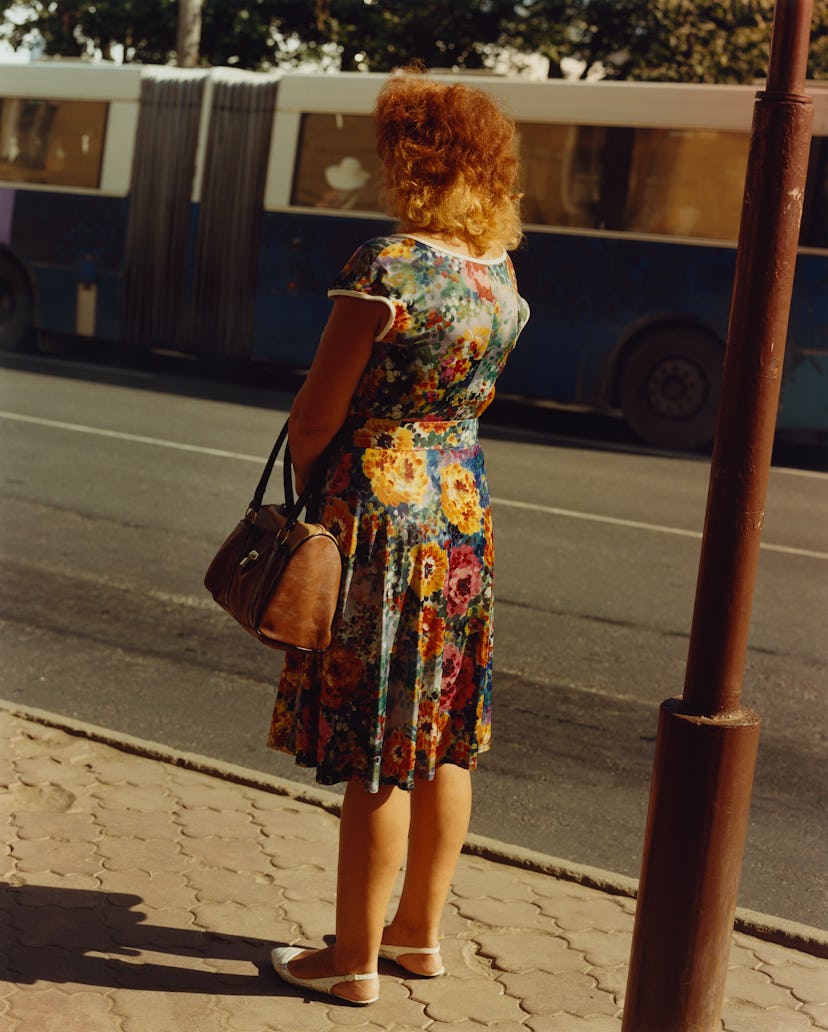Jamie Hawkesworth Pays Homage to Joan Didion
The British photographer Jamie Hawkesworth pays homage to the American writer Joan Didion’s “On Keeping a Notebook,” her essay of fragmented memories.

Why does one of Joan Didion’s notebooks contain a reference to a woman who describes her husband as having been “born the night the Titanic went down”? And why did Didion record equally idiosyncratic comments overheard in hotels, elevators, cloakrooms, and supermarket checkouts? Or jot down a recipe for sauerkraut?
“In order to remember, of course,” Didion, now 84 and one of the most admired American writers, recalled in her 1966 essay “On Keeping a Notebook.” “But exactly what was it I wanted to remember? How much of it actually happened? Did any of it?”
The cover of On Keeping a Notebook: Photographs and Drawings by Jamie Hawkesworth With an Essay by Joan Didion.
“On Keeping a Notebook” is to be republished this fall, this time as a book filled with images by the British photographer Jamie Hawkesworth, who is best known for the work he has shot for W, Miu Miu, and Alexander McQueen, as well as for personal documentary projects. Hawkesworth shot the trees, plants, and flowers that caught his eye while traveling everywhere from Russia to Romania to northern England. He also included photographs of the odd things and places that have intrigued him, such as a gigantic cloud of steam looming above a Louisiana sugar factory, and the location of one of his first assignments, a Swedish potato farm.
Hartlepool, 2013.
“I love to turn up to a place with no plan, not knowing what I’ll come across, leaving everything to chance, and seeing what presents itself,” Hawkesworth, 32, says. “When I went through my pictures for the book, I chose the ones that come from that fleeting spirit, which makes sense with Joan Didion’s writing.”
This new edition of On Keeping a Notebook is the fourth title in the Gould Collection, which combines existing work by a writer and a photographer. The series—just one book is published each year—was conceived as a tribute to Christophe Crison, the late French photography-book collector, by three of his friends: Russet Lederman, a New York–based editor and writer; Yoko Sawada, a publisher in Tokyo; and Laurence Vecten, a Paris-based freelance photo editor. Crison died suddenly of brain cancer in 2015 at the age of 45; the name of the collection is a nod to his Tumblr handle, Gould Bookbinder.
London, 2019.
Mongolia, 2017.
As Crison was an obsessive collector “and voracious reader,” says Lederman, the trio decided to pair photographers and writers whose work Crison loved—or that they believe he would have loved. The first title in the collection, Change, published in 2016, looked at the loneliness of individuals in crowds and included text by Stephen Dixon, one of Crison’s favorite American authors, and imagery by the Japanese photographer Mikiko Hara. The second, It Don’t Mean a Thing, focused on life in New York with ruminations by Paul Auster and photographs by the late Saul Leiter. The third, Hypermarché—Novembre juxtaposed poetry by the French author Michel Houellebecq with images by the Japanese photographer Motoyuki Daifu to explore the theme of social dysfunction.
Hartlepool, 2013.
London, 2019.
Hawkesworth and Didion have never met. When the photographer was approached by the Gould Collection trio, he had read only one of Didion’s books, The Year of Magical Thinking, a deeply moving account of the deaths, within a 20-month span, of her husband, John Gregory Dunne, and their daughter, Quintana Roo. “We’d been eyeing that text by Didion for a while,” says Lederman. “And we chose Jamie because we felt that he produced wonderful visual representations of the fragments of thoughts and memories that she wrote about so beautifully. Like Auster and Leiter, they’re both strong characters with sensibilities that represent their own generations, though it only dawned on us when we were working on the book that travel is very important to both of them. Didion’s text begins in the bar of a hotel across from a train station, and Jamie traveled all over to take the photographs he chose for the book.”
Floresti, Romania, 2018.
Each edition adheres to its own sensibility regarding length and design. The palette for On Keeping a Notebook takes its cue from the dusty rose pink of the flowers in Hawkesworth’s work, and “because we didn’t want it to be too sweet, we added an iridescent dark brown and matte tan,” Lederman says. “We try to find colors that have associations with the content of the books, but it’s all very intuitive.”
Hawkesworth owns a signed copy of The White Album, Didion’s 1979 book of essays, most of which explore the politics and culture of California, that was given to him by his friend Camilla Nickerson, the fashion stylist. “It has sat by my bed ever since, though I keep thumbing through it,” he admits. “Weirdly I was more familiar with Joan Didion from hearing Camilla talking about her than from reading her books.” His bedside copy of The White Album remains unread, but Hawkesworth did read “On Keeping a Notebook” while planning his choice of images for the book. “There’s a lovely bit where she talks about the hem of a dress of a woman sitting in a bar and another bit about eating crab that I found fascinating,” he says. “The way she described those memories really resonated with me.”
Kyoto, 2012.
Now that the project is completed, Hawkesworth is keen to return to Japan to complete a short film he began earlier this year in collaboration with Ryuto Kondo, the cinematographer of Shoplifters, the 2018 Japanese indie hit about a family living in poverty who subsist on whatever they steal from stores. “We jumped on trains across Japan for two weeks making this little film about chance,” Hawkesworth explains. “We filmed some very surreal moments, but I like only about seven minutes of it, so I need to go back there.”